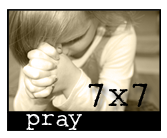Last reviewed: May 2009
This article is the archived version of a report that appeared in May 2009 Consumer Reports Magazine.
Think of supermarkets as giant selling machines, where traffic patterns, product placement, smells, displays, and signs lure you to spend more time cruising the aisles and more money at the checkout. These tips should keep you from falling for the tricks:
Look high and low
Supermarkets are in the real-estate business, and prime selling space includes the middle or eye-level shelving. Vendors sometimes pay retailers hundreds, even thousands, of dollars in slotting fees to take on new products or display products prominently. There are differing schools of thought on slotting fees, with critics contending that they stifle competition and boost prices. In any event, check whether similar products on top or bottom rungs are less expensive.
Eye end caps
Some shoppers assume that products on aisle ends are on sale, which is why those displays can boost sales by a third. But end caps can highlight items about to expire or those that aren't a bargain. At an A&P near our Yonkers, N.Y., headquarters, we spotted an end cap loaded with Pepperidge Farm cookies, all at full price. The end-cap tie-in is another trick: Related items are featured, not all of them on sale. Take the Tostitos display we saw at Stop & Shop. The chips were on sale; salsa and dips weren't.
Compare unit prices
Only a few states and metro areas have laws requiring price tags on every item. Elsewhere you'll typically find shelf tags under each product that reveal the cost per ounce, quart, pound, or 100 sheets. To see whether big packages really are cheaper, compare the unit price. We found many instances in which bigger wasn't better. At a ShopRite, for example, we eyed a 14-ounce box of Frosted Flakes on sale at $2.29 per pound compared with $4.38 per pound for a 17-ounce box.
Consider organics sometimes
Organic means expensive, so buy organic versions of produce that's most likely to harbor pesticides when grown conventionally, such as peaches, strawberries, and bell peppers. Organic meats and dairy foods might be worthwhile but not "organic" seafood because standards aren't in place. (Always cook meat thoroughly to avoid pathogens.)
Weigh the cost of convenience
Is it that much work to cut up carrots, celery, lettuce, and cheese? During one of our many shopping trips, we spotted a 6-ounce bag of shredded carrots for $1.50, almost five times as much, on a unit-cost basis, as a bag of whole carrots.
Avoid checkout temptations
Snacks at the checkout look more appealing the longer you're in line. But they're overpriced. At a Stop & Shop, a chilled 20-ounce Coke was $1.49 at the register. In the beverage aisle, a six-pack of slightly smaller bottles cost $3.33 on sale—about 66 cents per 20 ounces. For that much savings, you might want to wait until you get home and add ice.
Go deep
Retailers regularly rotate stock so that you see the oldest milk, cereal, cold cuts, and other packaged goods first; the newest stuff is pushed to the back. To get the longest shelf life from the food you've bought, burrow to the rear of the shelf, refrigerator, or freezer.
Read flyers carefully
Three-quarters of people we surveyed rely on weekly circulars to find out what's on sale. That helps explain why the mere mention of a product in a flyer can send sales soaring by as much as 500 percent, even without a price reduction. Manufacturers might have paid for placement in the ad. Don't assume featured products are on sale.
Watch for sneaky signs
Many sales tempt you to buy more than one bag or box—by touting, for example, four boxes of cake mix for $5. But rarely are you required to buy all four to get the discount. Retailers are just planting a number in your head, hoping you'll buy a lot.
Look at the location
The same food might be sold in several places throughout the store. At Stop & Shop, "premium" store-brand Swiss cheese was on sale at the deli for $6.99 per pound with a bonus card. In the refrigerated case, the same sliced Swiss was $5.58 per pound—no card necessary. A chunk of the same cheese was $4.69 per pound, also without a card.
Buy at the bakery
More and more supermarkets sell store-made baked goods, often for less than the commercial alternatives. At ShopRite, six hot-from-the-oven rolls cost $1.99; a packaged half-dozen from Freihofer's cost $3.19.
Check the receipt
In our 2008 survey, 6 percent of respondents said that they were overcharged at the register. That's in line with what readers told us in 2005. Both surveys also revealed that no chain stood out as particularly accurate or inaccurate. Many chains will give you the item free if it scans at the wrong price, but the onus is on you to point out the error.
Buy bagged produce
Some produce is much cheaper by the bag than by the pound. A ShopRite recently offered a 5-pound sack of potatoes for $2.99, compared with 99 cents per pound for loose ones in a bin. If the product has a long shelf life, bagged produce is a better buy, unless, of course, the only alternative is the 20-pound behemoth at Costco.

























































